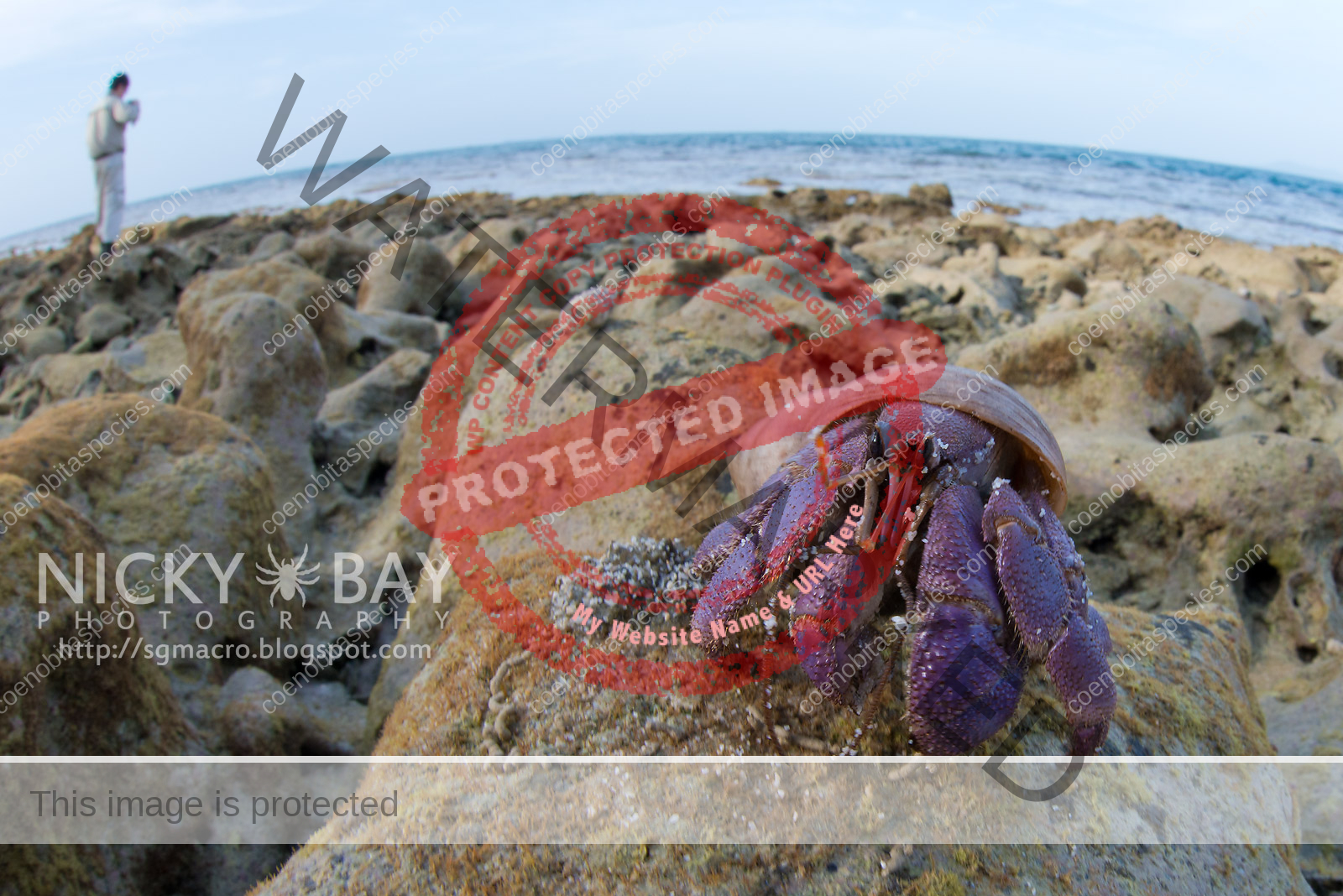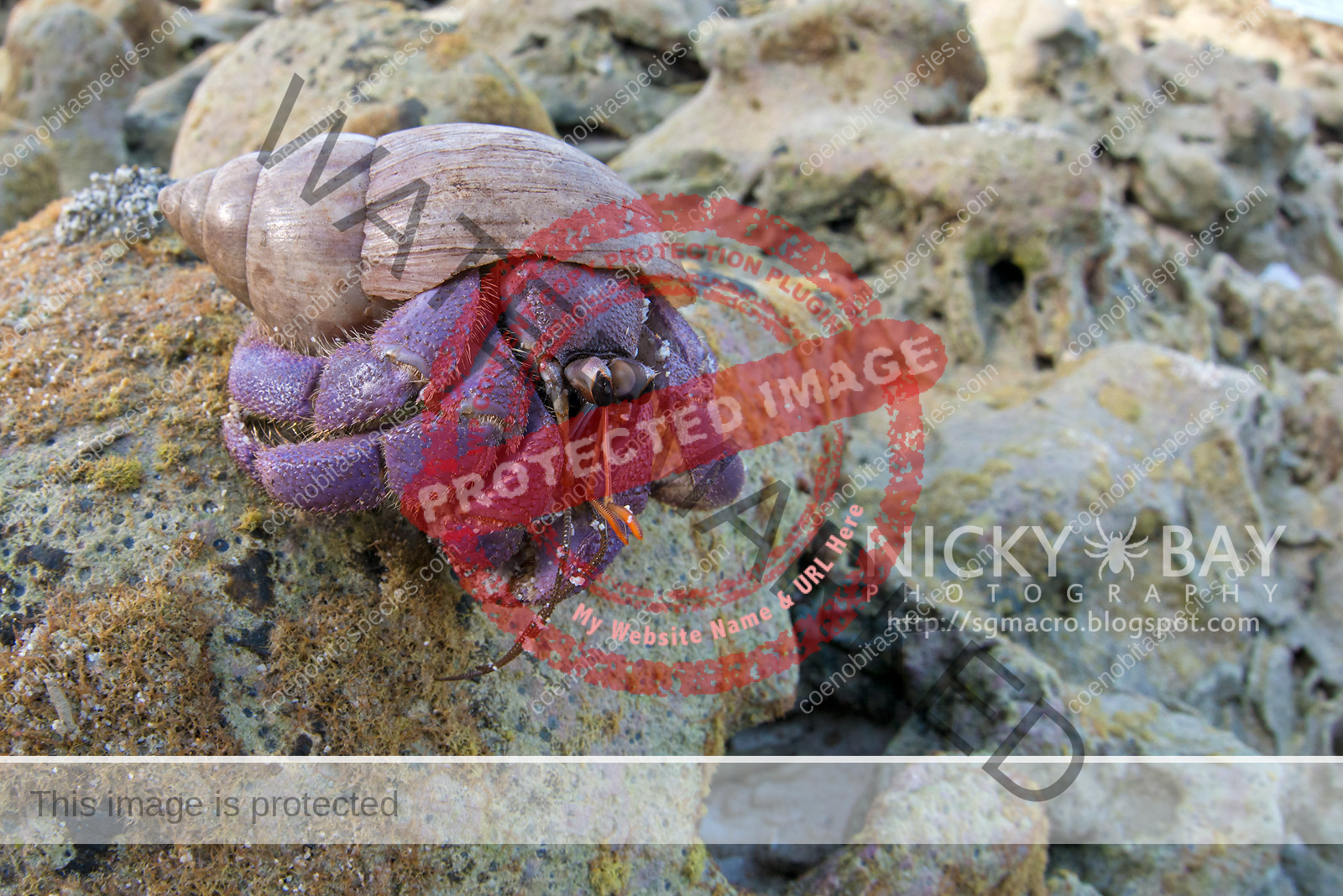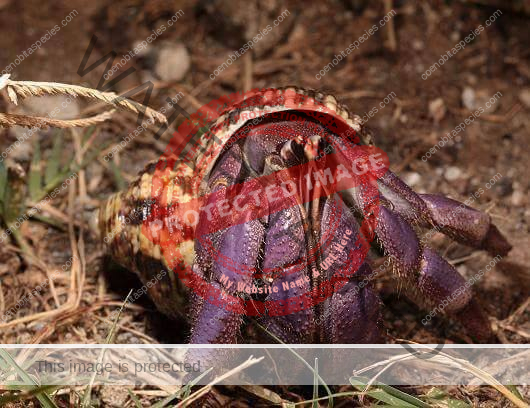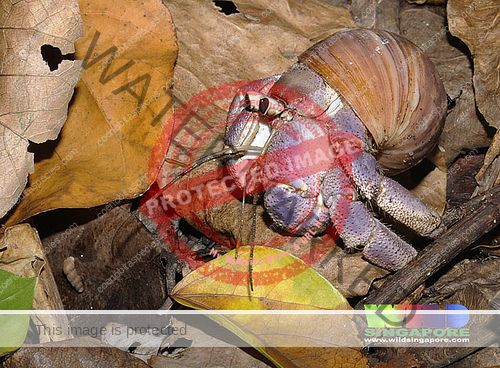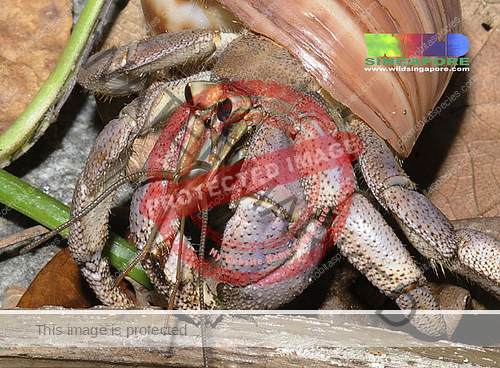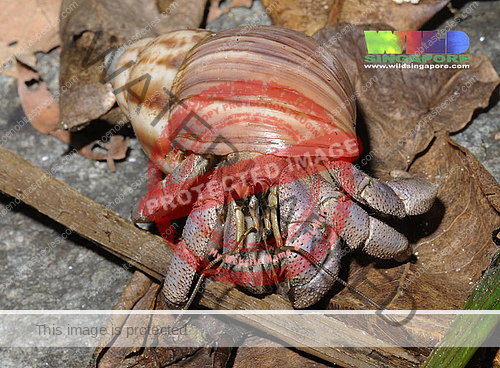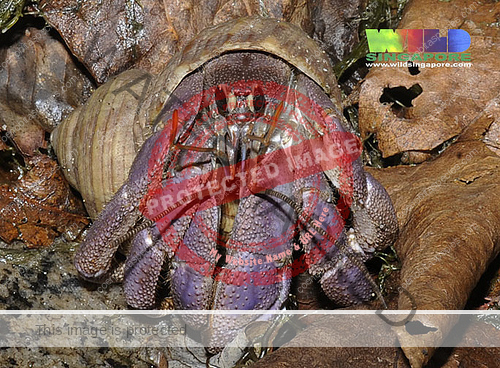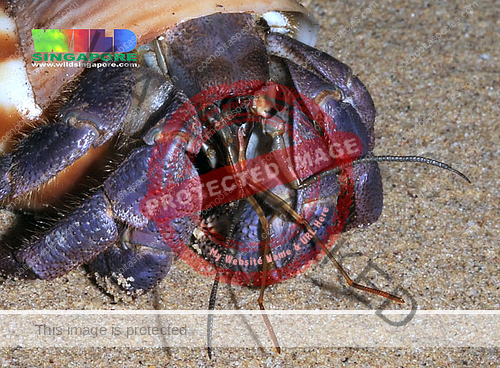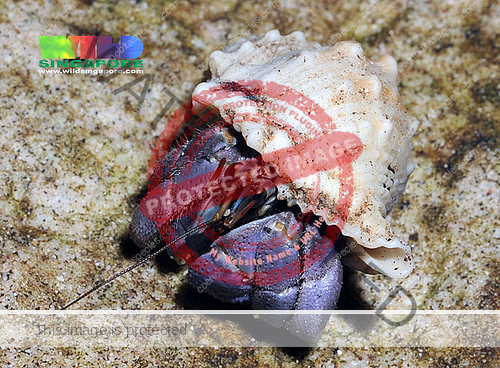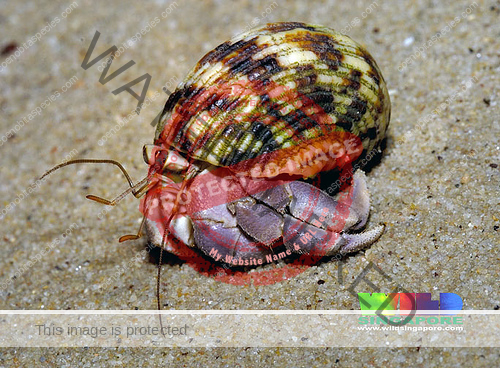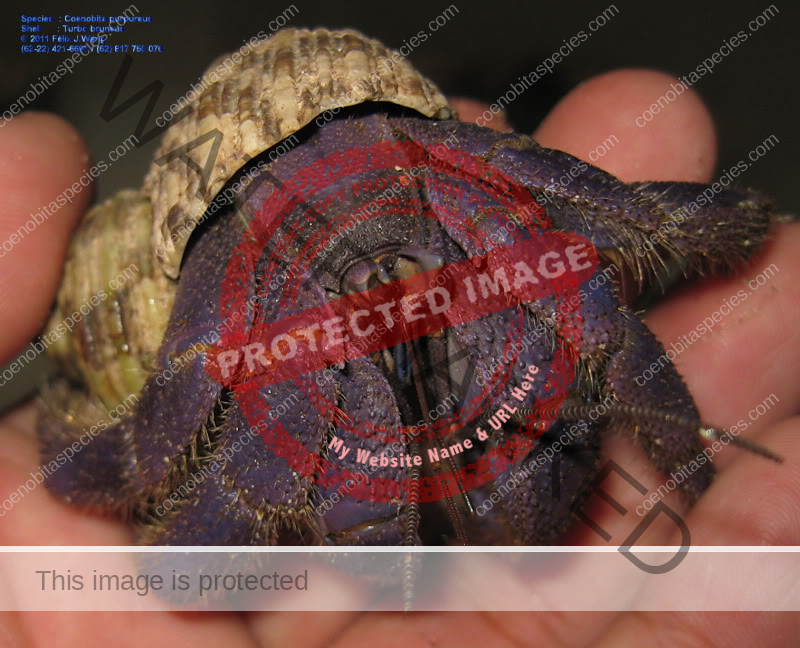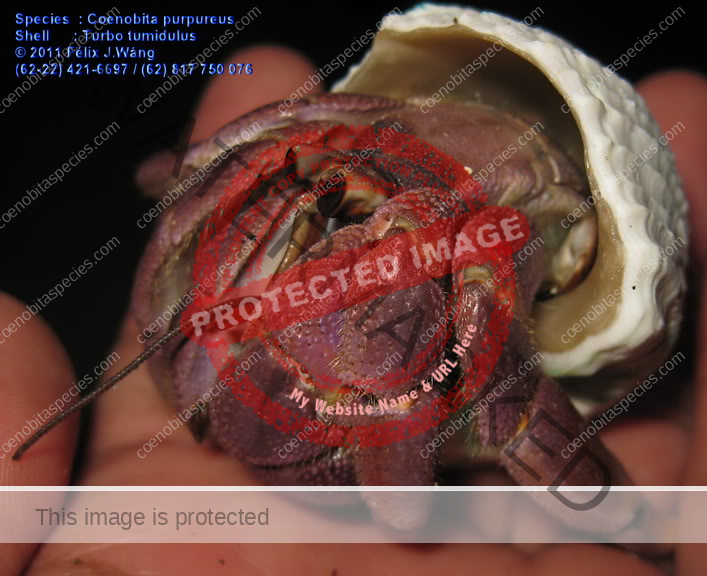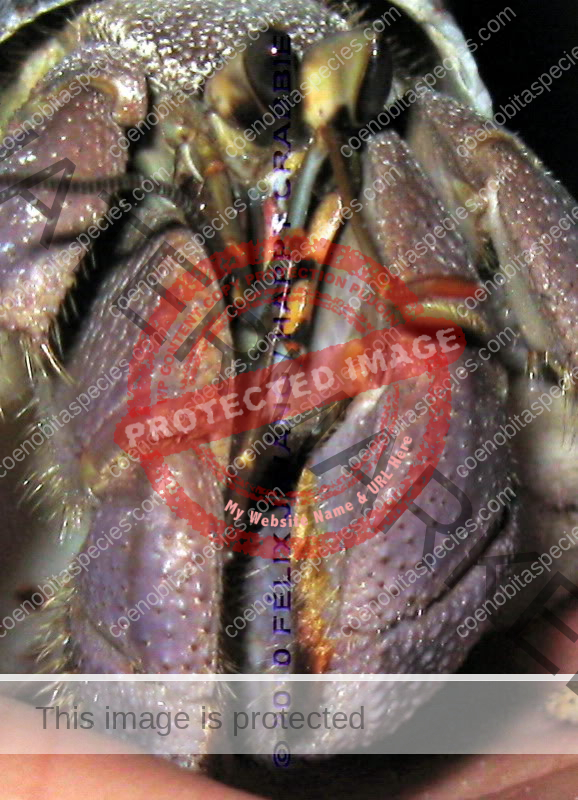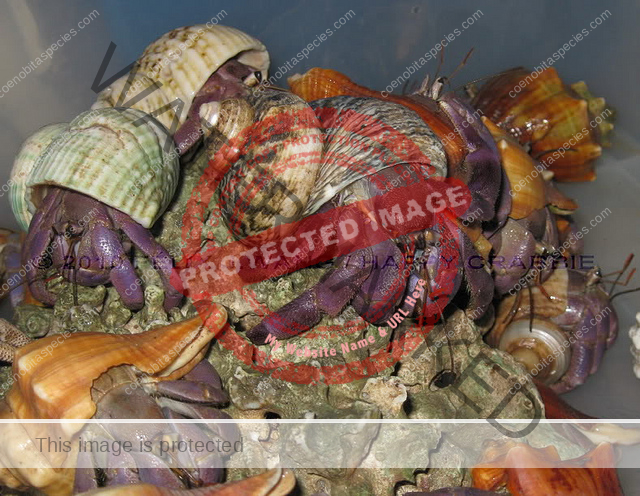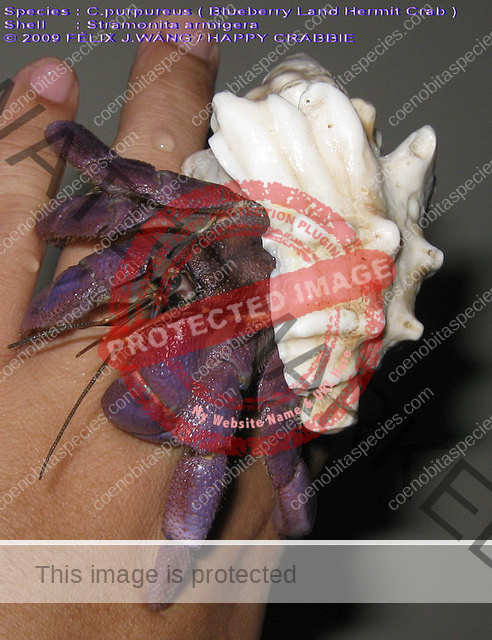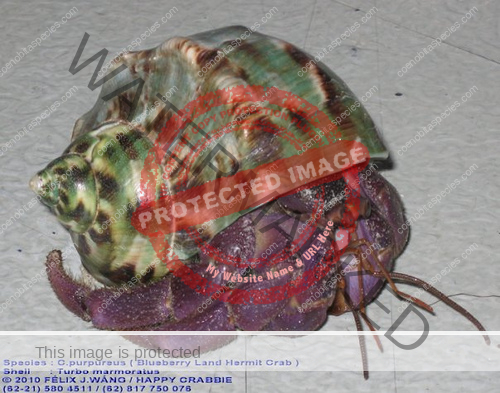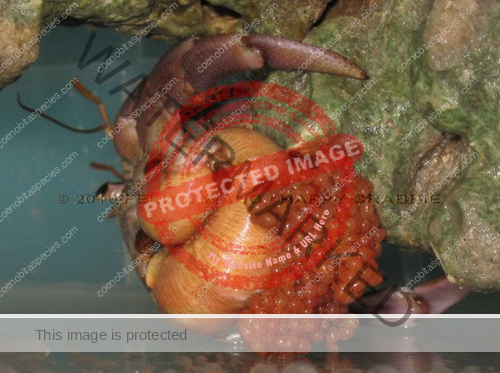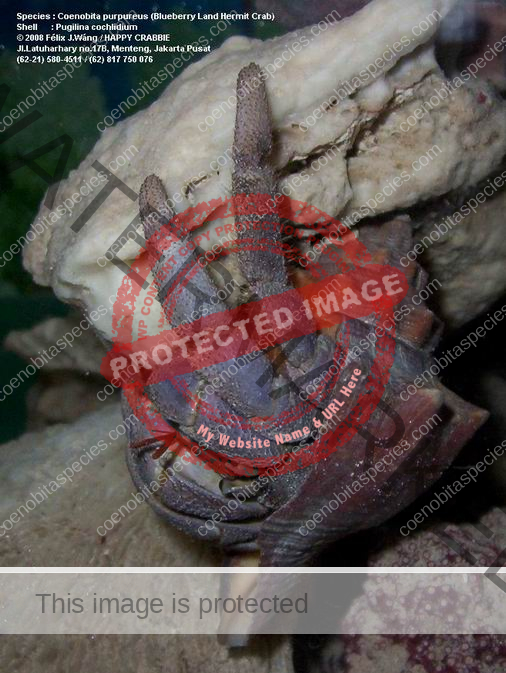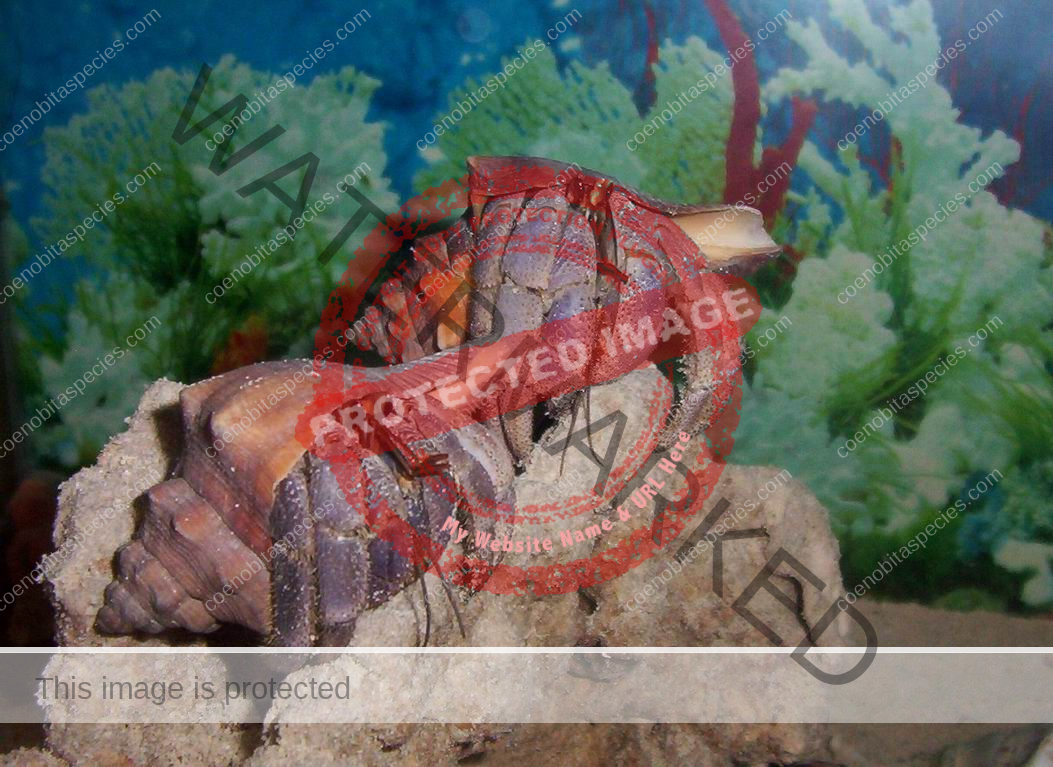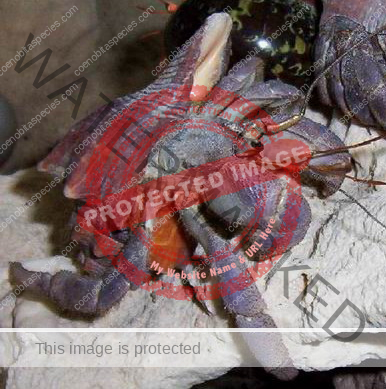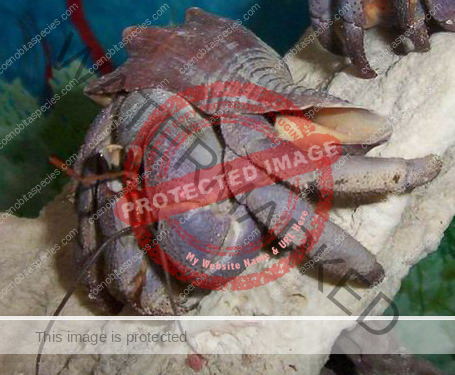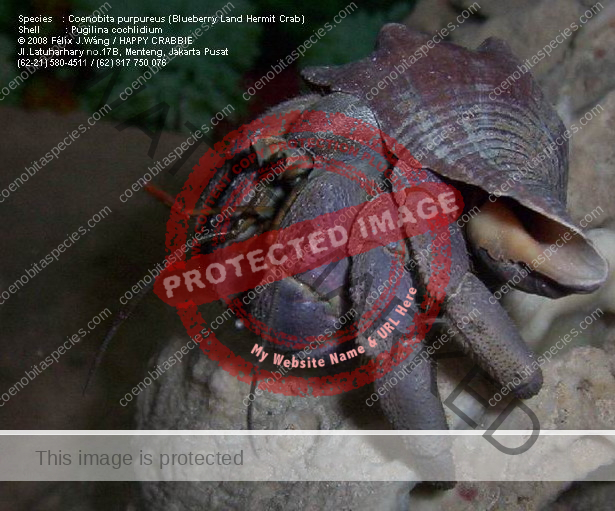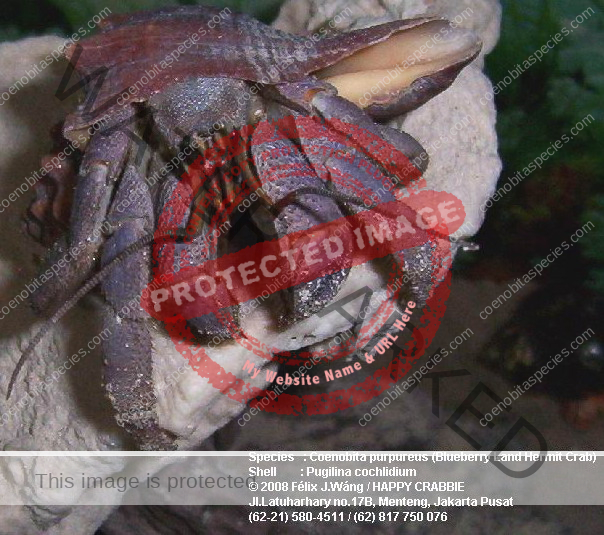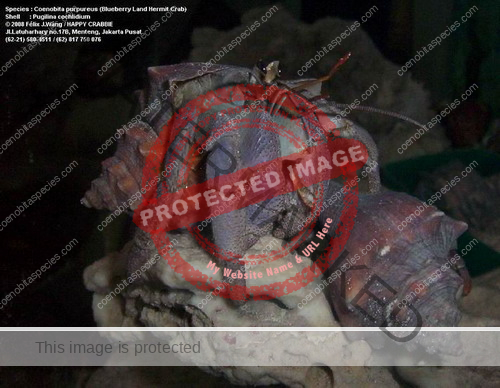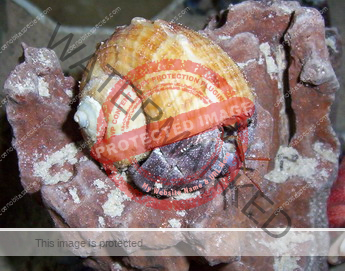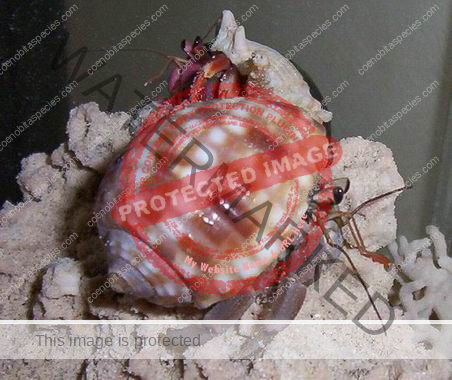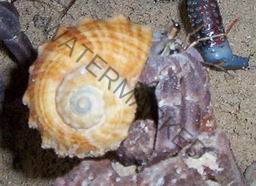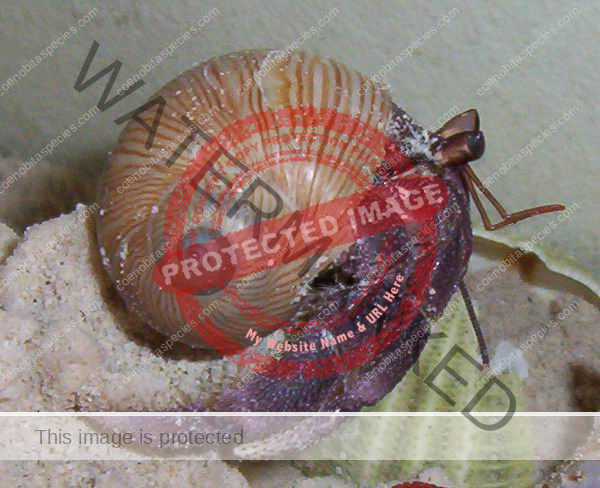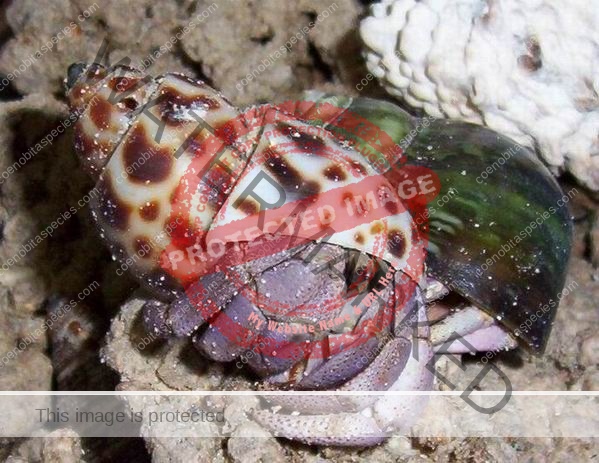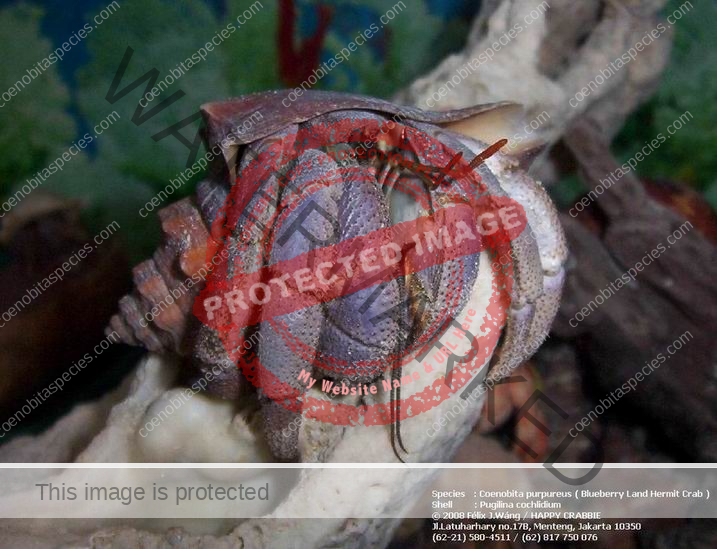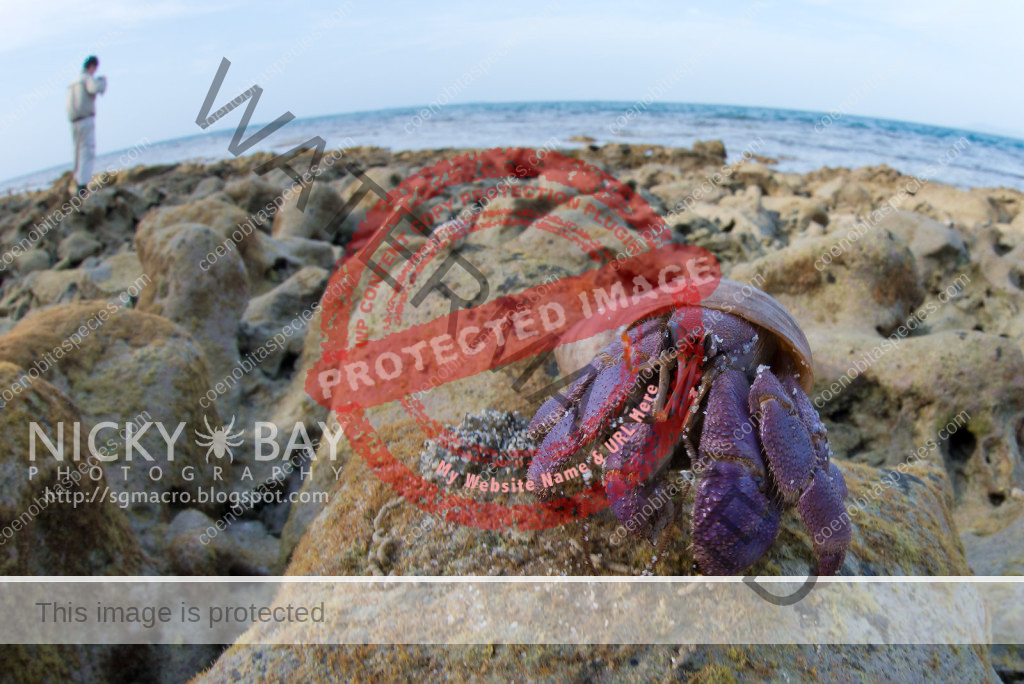
Coenobita lila has just been announced as a separate species from Coenobita purpureus in June 2016. For more information check out Tony Coenobita’s page on C. lila Tony Coenobita Species
Common name: lila
Latin origin: “lila” for lilac or light purple, alluding to the live colour of adult individuals.
Distribution: Singapore (Labrador Beach, BIg Sister Island, St John’s Island, Pulau Jong), Indonesia (Batam), Malaysia
Habitat: – Upper intertidal to 100 m inland from the beach, sometimes crowding in the supralittoral grass beds or under stones during the day. It is typically found in reef habitats, but may also occur at the edge of mangroves and other estuarine habitats. It is the only species of Coenobita found in Singapore thus far.
Ecology:
Larval Stages:
Characteristics: Shield (Fig. 1A) transversely convex, about 1.6 times as long as broad; anterior margin between rostrum and lateral projections slightly concave; lateral projection produced, terminating in blunt spine; posterior margin slightly rounded. Rostrum broadly rounded, obsolete. Lateral surface slightly punctate; dorsal surface scattered with small and large tubercles. Ocular peduncles strongly compressed laterally, mesial surface shallowly concave distally, reaching half length of ultimate segment of antennal peduncles; cornea small, occupying only one-third of distal part of ocular peduncles laterally; dorsal surface with scattered small tubercles and short setae. Ocular acicles triangular, crossing at tip, terminating acutely. Antennular peduncles (Fig. 1B) long. Basal segment 0.7 times as long as penultimate segment. Ultimate segment almost as long as or slightly longer than penultimate segment. Upper rami of flagella stick-like, terminating in rounded tip, with very short setae on lateral and mesial margins. Antennal peduncles (Fig. 1A, C) exceeding ocular peduncles by half length of fifth segment, reaching half length of penultimate segment of antennular peduncles. First segment 1.2 times as long as broad. Second segment stout, covered with small tubercles. Third to fifth segments unarmed, with scattered, very short setae. Antennal acicle fused to second segment of peduncle. Flagella long, overreaching tip of right cheliped.
Chelipeds unequal, dissimilar; left distinctly larger than right (Figs. 2A, 4A–C). Dactylus of left cheliped approximately as long as palm; outer surface with numerous tubercles, with tufts of short setae, upper margin and inner surface with rows of corneous-tipped tubercles and tufts of short, stiff setae; cutting edge with one large tooth proximally followed by several smaller teeth, terminating in small corneous claw. Palm without stridulatory apparatus on upper outer surface, upper margin with brush of long, coarse setae on proximal half and row of large, corneous-tipped tubercles; upper half of outer face with rows of large tubercles, some corneous-tipped; rows of smaller corneous-tipped tubercles medially, fewer smaller tubercles on lower half; lower margin with corneoustipped tubercles bearing tufts of short setae; lower proximal part angled, forming slightly oblique lobe-like projection, continued to slightly upright lower margin of fixed finger; inner surface with scattered corneous-tipped tubercles and short setae, brush of setae proximally near upper margin. Fixed finger with scattered, large tubercles on outer surface, each tubercle with two or three short setae; lower margin with row of large tubercles, some corneous-tipped; cutting edge with row of large teeth terminating in small corneous claw; inner surface with scattered corneous-tipped tubercles and short setae. Carpus with corneous-tipped tubercles on outer surfaces, slightly larger tubercles near upper margin; each tubercle with tufts of setae; inner face smooth but with long, dense setae on distal margin. Merus with transverse rows of flattened, corneous-tipped tubercles on outer surface, these tubercles with very short setae; lower outer and inner margins each with tubercles and tufts of short setae, inner surface smooth.
Palm of right cheliped (Fig. 2B) with thick brush of long coarse setae on upper margin; outer surface of palm and dactylus with rows of corneous-tipped tubercles, each with two or three long setae. Inner surfaces of palm and dactylus with scattered corneous-tipped tubercles, each with tufts of setae; proximal area of palm with long, coarse setae near upper margin. Carpus and merus similarly armed as left cheliped.
P2 and P3 dissimilar, P2 slightly shorter, more slender than P3. Dactylus of left P2 with lateral and dorsal surfaces flattened, with rows of corneous-tipped, sometimes flattened, tubercles; mesial face with rows of numerous corneous-tipped tubercles each bearing tufts of short setae; ventral surface (Fig. 3A) with longitudinal ridge consisting of row of tiny corneous teeth, ventrolateral margin with row of corneoustipped tubercles and tufts of short setae. Propodus with small corneous-tipped tubercles, with two or three setae on lateral surface; dorsal surface broad, with row of corneoustipped tubercles on dorsomesial margin; mesial surface concave, smooth except for few small tubercles and setae, delimited ventrally by longitudinal row of corneous teeth; ventrolateral surface with row of corneous-tipped tubercles and relatively long setae. Carpus with rows of small tubercles on dorsolateral margin, each bearing two or three short setae; lateral surface with numerous corneous-tipped tubercles, each with tufts of setae; ventrolateral margin with larger corneous-tipped tubercles each with tufts of setae; mesial face slightly concave with scattered tufts of short setae; ventromesial face with sparse tufts of short setae. Merus compressed laterally and mesially, lateral and mesial faces smooth, except for several tubercles distolaterally. Right P2 slightly longer, more slender than left, dactylus (Fig. 3C) covered entirely with corneous-tipped tubercles, dorsal margin not delimited. Propodus covered with corneous-tipped tubercles on dorsal and lateral faces; dorsal margin with row of corneous-tipped tubercles and tufts of short setae; mesial face slightly concave with few tufts of short setae; ventral margin with row corneous-tipped tubercles and tufts of long setae. Carpus and merus as in left P2.
Left P3 with dactylus (Figs. 2C, 5A–C), 1.2–1.4 times longer than propodus, lateral face slightly convex distally, flat proximally, with small, corneous-tipped tubercles distally, punctate proximally, with tufts of short setae, delimited by row of corneous-tipped spines dorsally; dorsal surface broad, having longitudinal rows of corneous-tipped tubercles, decreasing in size proximally; mesial surface with rows of corneous-tipped spines each bearing tufts of setae; ventral margin with row of small corneous spines laterally; ventral surface (Fig. 3B) with longitudinal ridge consisting of row of tiny corneous teeth. Propodus slightly flattened distally on lateral surface, slightly convex proximally, covered with tubercles, some corneous-tipped, each tubercle with tufts of short setae; dorsolateral margin delimited in distal four-fifths by row of corneous-tipped tubercles; dorsal surface (Figs. 2E, 6A–C) flattened, broadened distally, slightly narrowing proximally, with rows of small tubercles, some with corneous tip; dorsomesial margin delimited by row of corneous-tipped tubercles and short setae; mesial surface with numerous corneous-tipped tubercles each with tufts of setae; ventral surface slightly concave with irregular rows of corneoustipped tubercles, each with tufts of long setae; ventrolateral margin with longitudinal row of small corneous teeth with tufts of sparse setae. Carpus with rows of small tubercles each with two or three short setae on dorsolateral margin, lateral face with numerous corneous-tipped tubercles each with tufts of setae; ventrolateral margin with moderately large spines each with tufts of setae; mesial face almost smooth except for few tufts of short setae. Merus compressed laterally and mesially, transverse row of flattened tubercles on lateral surface; mesial face almost smooth, ventral margin with moderately large spines and tufts of long setae. Right P3 longer, more slender than left, with longer and denser setae on ventral margin. Dactylus and propodus (Fig. 2D) covered entirely with tubercles, corneous-tipped tubercles mainly on dorso- and ventrolateral surface (Fig. 3D); dorsal margin not delimited; mesial face of dactylus with rows of corneous-tipped tubercles and tufts of setae, mesial face of propodus with sparse small tubercles and short setae. Carpus and merus as in left P3.
P4 semi-chelate (Fig. 2F). Dactylus with row of small corneous teeth ventrally, long, coarse setae dorsally; propodal rasp well developed, occupying large, semicircular area, consisting of numerous corneous scales. P5 chelate.
In male, coxae of P5 thick, forming moderately long, calcified sexual tube, subtriangular, left tube slightly broader than right. Gonopore positioned on small, triangular posterior projection or papillae, obscured by coarse, dense setae; moderately large, subpentagonal sternal protuberance between both coxae (Figs. 1D, 2G).
Telson (Fig. 1E) with distinct lateral indentation, separating anterior and posterior lobes. Anterior lobe shorter than posterior lobe. Posterior lobes almost symmetrical, separated by narrow median cleft; margins with row of setae.
Common identifiers:
- Eyes – Stalks white/light purple dorsally, light brown mesially
- Large claw – No stitch marks, setae on upper margin of palm, tubercles on lower outer surface of palm
- Shield – dark patch (dark purple or light brown), dark line across (behind the eyes), covered by tubercles and stiff setae
- Coloring – Usually purple, violet, or pale violet in adults (Figs. 10A, C, F, 11A). Surface of shield with patch of dark purple or light brown anteriorly, transverse dark brown line distally; light purple medially and posteriorly. Ocular peduncles light purple with whitish purple tubercles dorsally, light brown mesially; cornea dark brown. Antennal and antennular peduncles brown. Chelipeds purple with corneous-tipped tubercles dark brown; setae on upper margin and inner surface of palm brown. P2 and P3 (walking legs 2 and 3) purple with corneous-tipped tubercles dark brown, carpus and merus with longitudinal streak of light brown. In some females, shield light purple or greenish brown tinge with patches of brown and dark brown; palm of left cheliped with large patch of brown on lower outer surface. Small females light purple, greenish white or yellowish green (Figs. 10D, E, 11C), with patches of dark brown on shield, ocular acicles and palm of left cheliped.
- Variation. The species shows considerable variation in morphology and live colouration. The shape of the lobe-like projection on the lower margin of the left cheliped differs in specimens and this is not related to size or sex. In the male holotype (sl 16.7 mm) (ZRC) and one female paratype (sl 10.1 mm) (ZRC), the lobe-like projection on the lower margin of palm of the left cheliped is broad, the oblique proximal lower margin forms triangular angle continued in a straight line to slightly upright lower margin of fixed finger (Figs. 2A, 4B); in other female paratypes the lobe-like projection is broad, rounded, continued in straight line to slightly upright lower margin of fixed finger (Fig. 4A, C). The dorsal surface of the propodus of the left P3 of male holotype is broad, delimited by row of weak tubercles (Fig. 2E), while in females paratypes, the dorsal surface of the left P3 is broad, only slightly delimited (Fig. 6C) or not at all (Fig. 6A, B). The coloration varied from dark to light purple, dark to light brown, or greenish white and yellowish green or brown.
- Chirps – Yes
Behavior:
Diet:
Preferred shells:
Anatomical diagram:
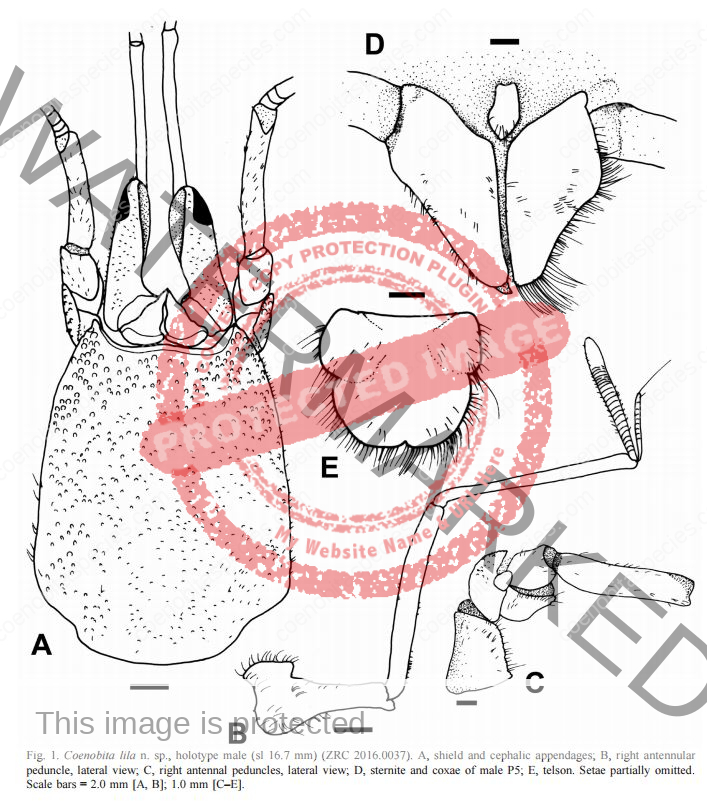
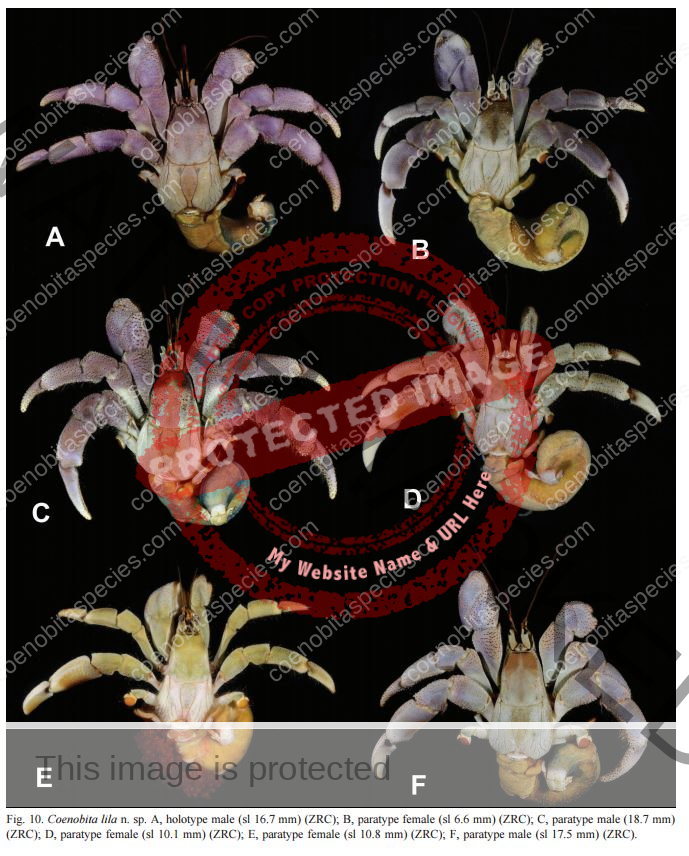
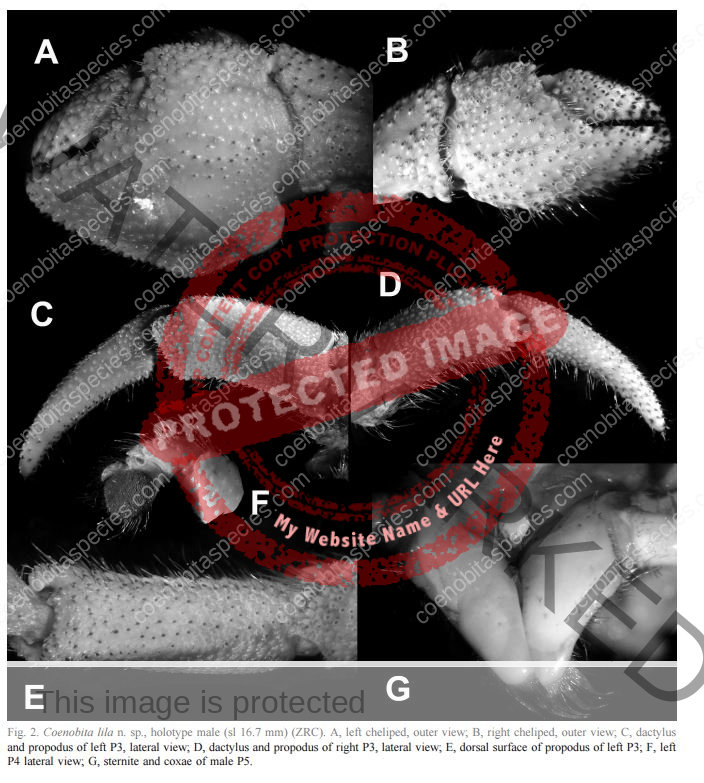
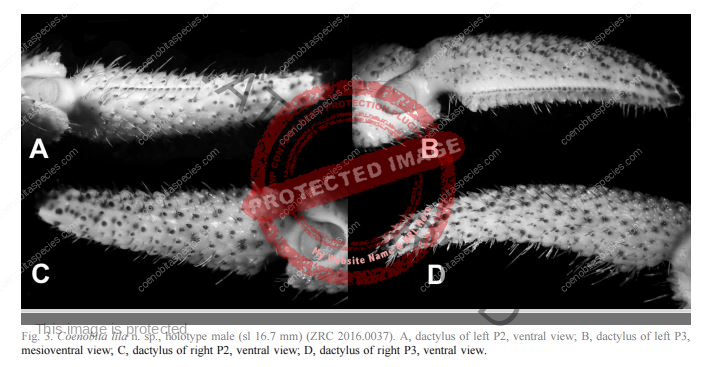
Photos comparing C. lila to C. cavipes:
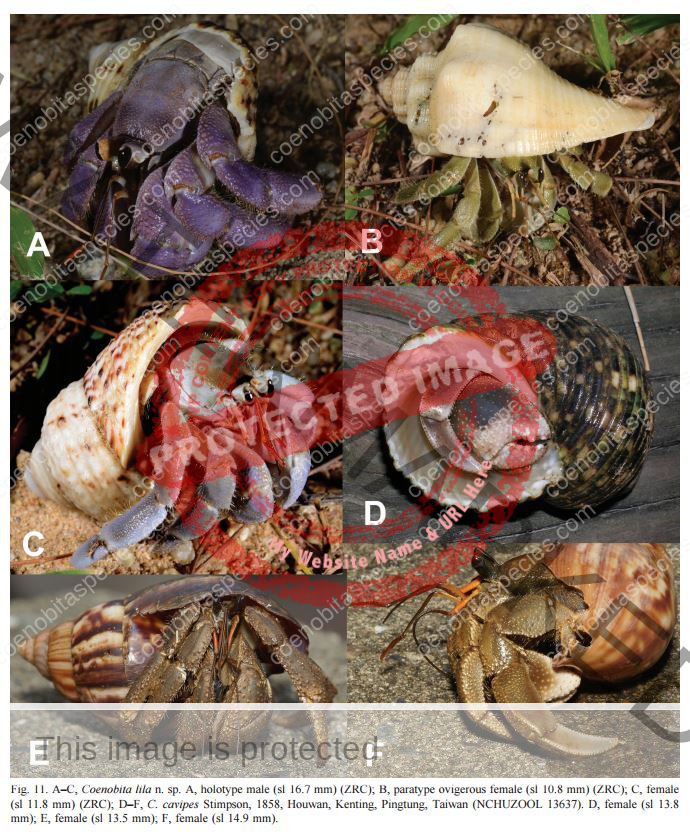
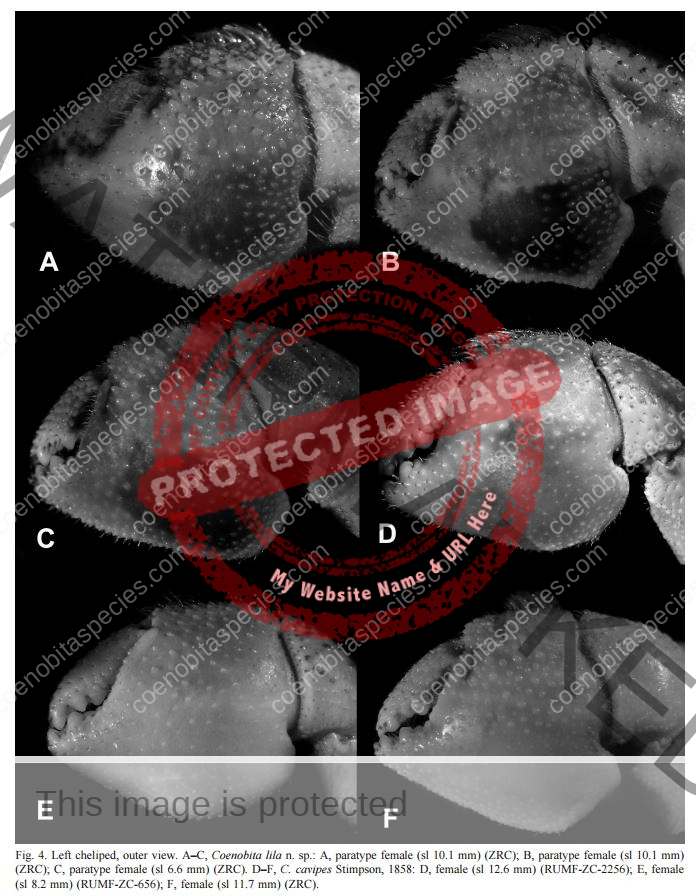
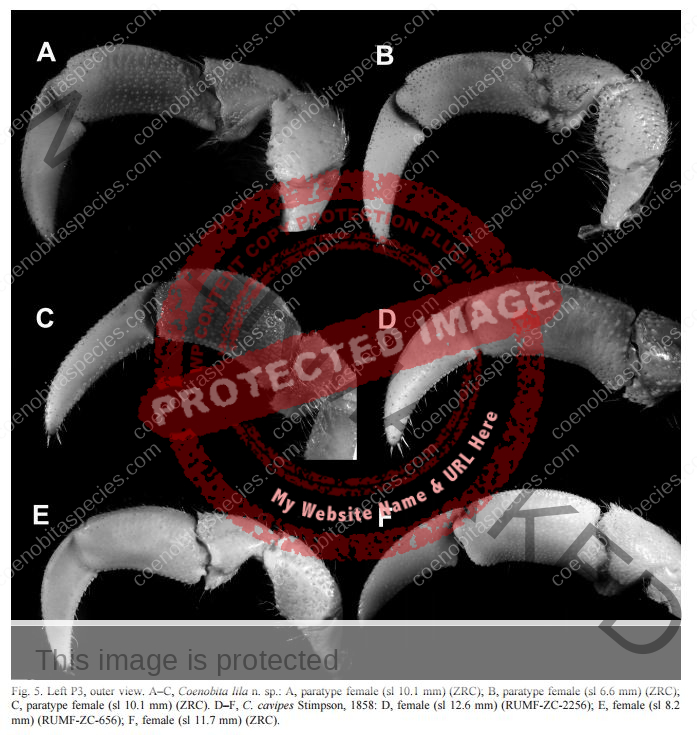

Source: A new species of land hermit crab in the genus Coenobita latrielle … previously confused with C. cavipes Rahayu, Shih, Ng
Special thanks to Tony Coenobita for collaborating with me on Coenobita species identification and for sharing this research with me.

